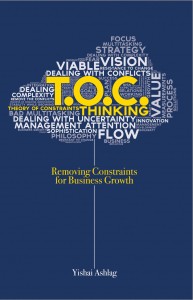 Value
Value
“Value is created by removing a significant limitation for the customer, in a way that was not possible before, and to the extent that no significant competitor can deliver.”
The common definition of value is the ratio between the features and benefits of the goods or service to its price. In accordance, any additional feature or benefit increases the value. Since not all features have the same merit in the eyes of the customer, different levels of superlatives to describe the value, such as “good,” “great,” and “exceptional” are used.
Great businesses are built around the idea of delivering exceptional value. The question is, how do we know what exceptional value is? The answer is that this kind of value is created by removing a significant limitation in a way that was not possible before, and to the extent that no significant competitor can compete with.
Companies thrive in the periods they are able to do exactly this. Prominent examples are companies such as Walmart, IKEA, Google, and Apple. For Walmart, the concept of an “everyday low price” enabled many families to stretch their family budget. IKEA was the first to offer contemporary furniture at very affordable price points. Google considerably improved our access to information and advertisers’ access to their targeted audiences. Apple used tight integration between software and hardware and its ability to cooperate with media providers to simplify the way we consume digital entertainment.
When assessing value we have to be careful not to put too much emphasis on market surveys. Most often, customers take limitation as part of reality. They don’t foresee a reality without limitation, and therefore are not in the best position to evaluate new possibilities.
Traditional strategic thinking focuses on analyzing the competitive landscape (known as “Porter analysis”). This forces us to focus on the competitive position too soon. When we do this, we “put the carriage before the horse.” We must first and exclusively strive to understand the value we plan to deliver, rather than think about how to protect our business. When we start with competitive analysis, the main focus is on how to limit the competition, using vertical integration and high switching cost, and we are less likely to come up with a vision of exceptional value. Moreover, it is the quest to deliver value that generates the assets that then create the competitive edge.
There are four major layers of protection that are created in the pursuit to deliver value: paradigm shift, leadership position, unique processes, and benefits of scale.
The first roadblock to competition is a paradigm shift that is required in the way a company operates in order to deliver value. To remove a serious limitation for its customers, the company needs to challenge some of its assumptions about the way it does business. The more fundamental the assumption, the higher the chance its questioning will lead to a paradigm shift. In general, people do not like to go through paradigm shifts, as such shifts take them out of their comfort zone. Many of the rules they have relied on are not valid after this shift, and new rules need to be established. It is the company’s ability to go through these paradigm shifts that gives it the lead in the new market.
Similar ways of thinking about business strategy are described in W. Chan Kim’s book Blue Ocean Strategy. To demonstrate this point, let us review the companies in the previous example. Walmart had to challenge the industry pricing and merchandising policies. In the effort to reduce its product price points, IKEA challenged the assumption that furniture should be assembled before being sold. It required a clear vision of value to so vigorously insist on this policy. Google introduced the search page format during the time that “the gate” to the internet was a Yahoo-style portal.
Apple didn’t invent the MP3 format or player, but it was the first to offer an MP3 player with a web store to buy music. Apple insisted on selling songs for 99 cents when the industry consensus was that the right model was renting the music for a monthly subscription fee. The “experts” viewed the subscription model as the answer to the music industry problem. Apple believed that the 99 cent model was the answer to the consumers’ need to own their music and therefore was committed to the model even though it complicated its billing system with micro transactions. Later, when Apple introduced the iPhone, it challenged the grip on access to content that the cellular providers held. In less than five years it forced the industry to change its practice and open access to the web.
The paradigm shift associated with delivering exceptional value is just the first challenge for competitors to follow. Delivering exceptional value usually redefines the market and positions the company that introduced this value as the market leader. The combination of being a market leader and the time gap it takes the competition to go through the new paradigm shift puts the company in an excellent position to capitalize on its value offer and expand its market and reach. Simultaneously, the company has to develop special processes that will support such rapid expansion. These processes together with the benefits of scale help the company foster its competitive position.
In the current example, Walmart developed its own processes for efficient replenishment, mass employee training, and opening new stores.
IKEA’s design process starts with the target price and accommodates materials, logistics, labor and transportation costs to support it. No other furniture retailer has such a unique and holistic process. With their successes, both Walmart and IKEA enjoyed the economies of scale.
Google built a local, national and international distribution network for AdWords, the company’s main advertising product. This operation is no less exceptional than its searching algorithm.
Apple relied on four fields to support its growth: The ability to put together media deals to add more and more digital content to its iTunes store; the ability to develop and introduce new and improved products to maintain its product leadership; the ability to source and manage an efficient and responsive supply chain; the development of its unique retail concept and the concept’s deployment. One or two of these elements would be enough to secure a leading position in the market. Having all four makes it very hard for the competition to play catch-up.
If we wish to evaluate the potential value of new technologies, we can also benefit from Goldratt’s definition of value. Typically, we try to evaluate the potential value of the technology by estimating the potential value of the functions and features that the new technology provides. This kind of analysis tends to be murky. In isolation, some features may only have a small benefit, and it is hard to assess the value of the features combined.
When the criteria involves the extent of the removal of significant limitations, the answer be- comes much clearer. It also helps us to focus on what other changes in the business’ policies are needed in order to actually remove the limitation. In many cases where a new technology can reduce a limitation, there are fundamental changes in policies and norms that are required in order to materialize the value. We tend to underestimate the challenges in changing these norms and policies. For example, we see the changes in norms and policies the music industry had to go through in order to capitalize on digital music. Similar examples can be found in healthcare, defense, or any other industry. The following process guides us step by step from the power of the new technology/what the technology actually does, to the value it aims to provide and the challenges to delivering this value:
• What is the power of the technology / application?
• What current limitation/barrier does it eliminate or vastly reduce for the potential customers?
• What policies, norms and behavior patterns does the current market use to deal with the limitation?
• What new behaviors will the customers need to adopt in order to reap the benefits of the new technology/application?
• In view of the above, what changes and/or additions to the new technology should be introduced?
• What are the major roadblocks to change?
This is an excerpt from TOC Thinking: Removing Constraints for Business Growth by Yishai Ashlag. Copyright © 2014 Yishai Ashlag






